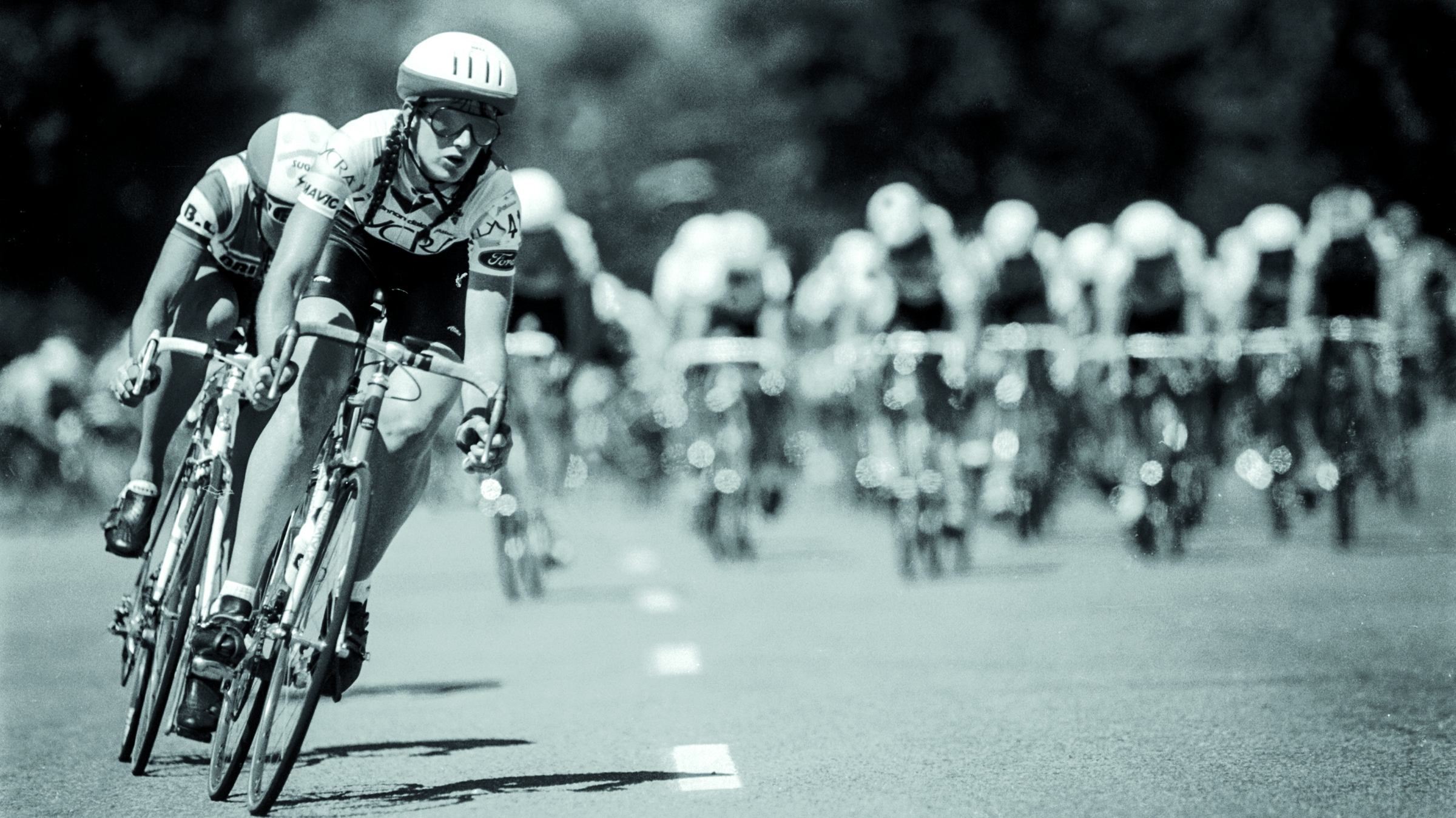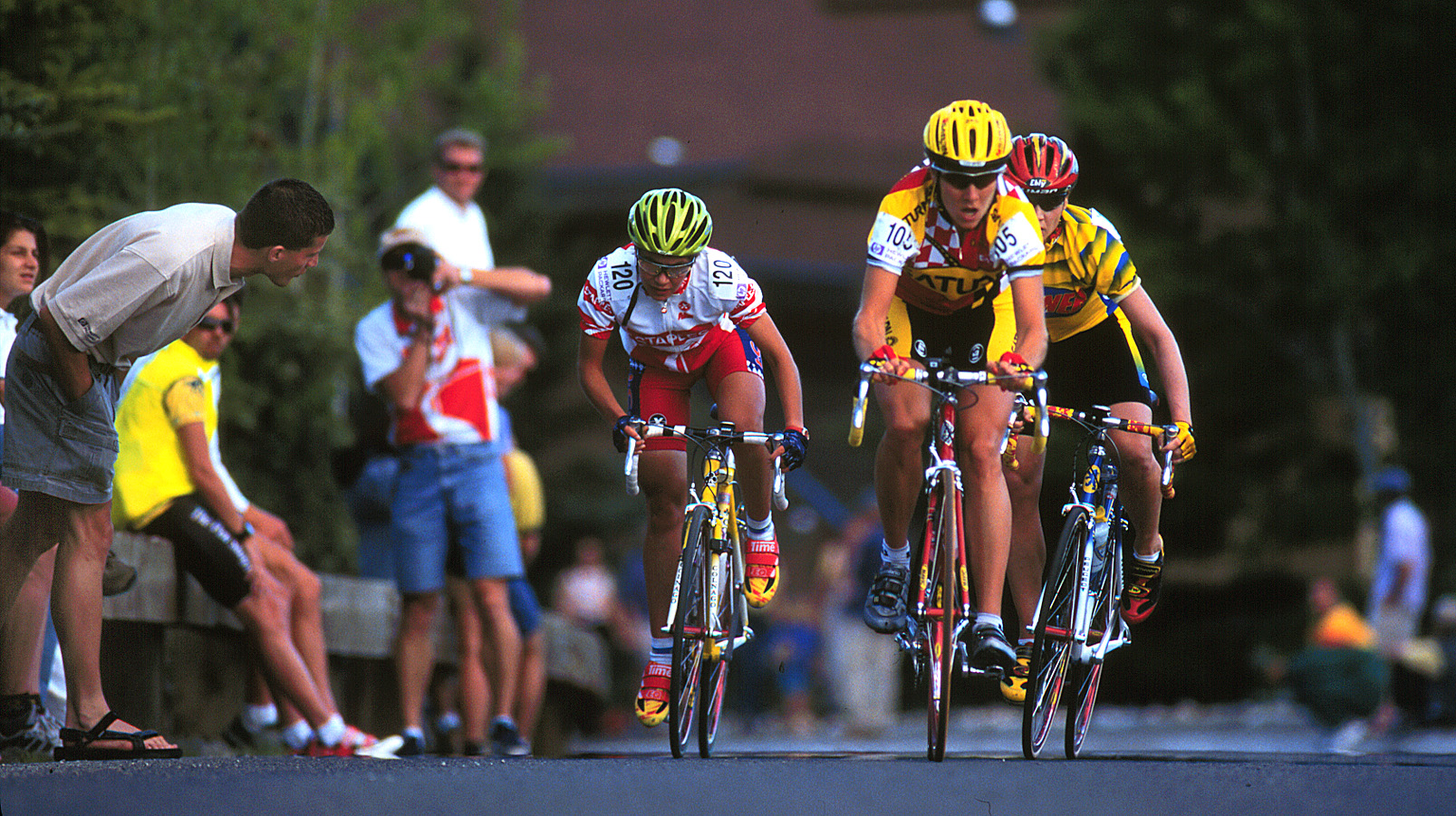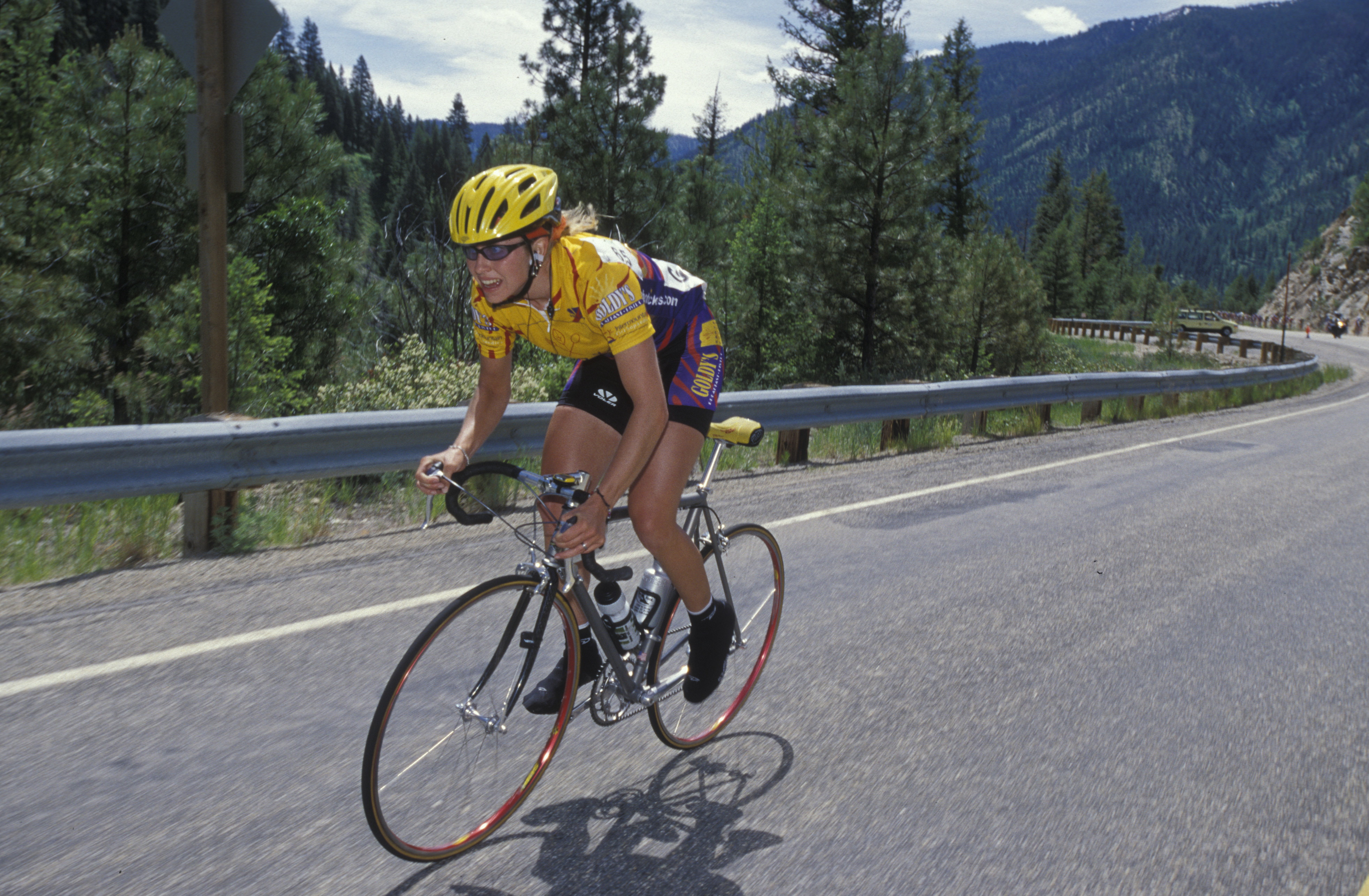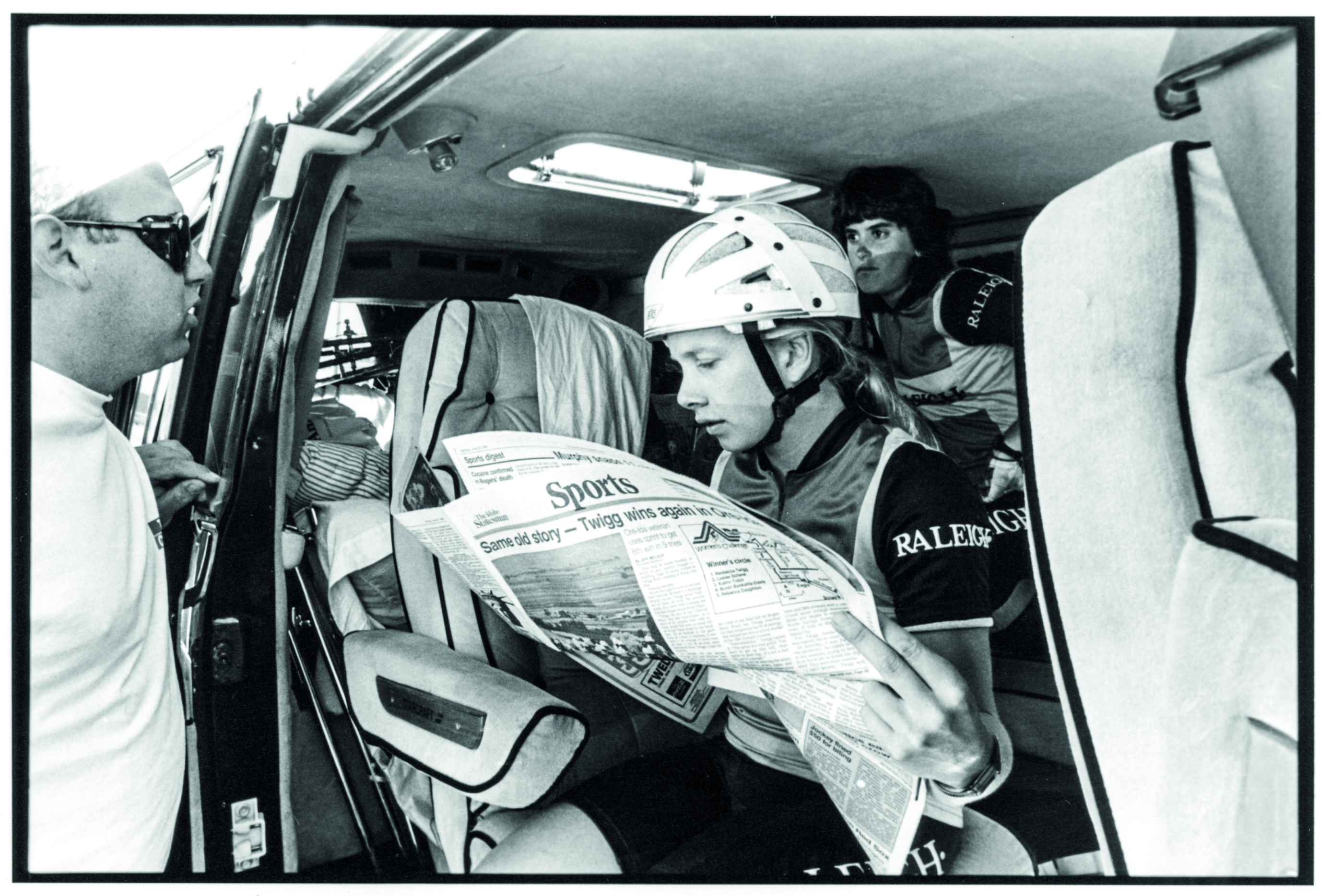The Women’s Challenge: the toughest race ever?
Cyclingnews looks back at the Idaho race, one of the most groundbreaking events in the women's sport


Idaho’s Women’s Challenge was a stage race that pushed the boundaries in women’s cycling during its 19-year run, with one edition deemed so excessive by the UCI, they refused to sanction it at all.
In 1990, Jim Rabdau, organiser of the Women’s Challenge, wanted his race to make a statement to mark the centenary of their home state of Idaho.
Idaho is affectionately known as the ‘gem state’ thanks to the multitude of precious stones its landscape contains. Its vast open spaces, empty countryside and extensive mountain ranges make the western US state a perfect cycling playground, even if it did have almost no cycling heritage to speak of. This was the seventh edition of Rabdau’s race, and it was growing in stature each year, but with such a reason to celebrate, he wanted to create an event never done before, something that had the scale to live up to Idaho’s expansive landscape.
Rabdau created a race route that covered a mammoth 17 stages over 16 days, taking in a total distance of 1,067 kilometres with 6,705 metres of climbing. In 1984, the inaugural edition of the Tour de France Féminin may have featured 18 days’ racing and covered 1,080km across France, as the women rode a few hours ahead of the men’s race, but Rabdau’s stages were longer on average and even featured one at 129km alone, a distance that broke all official guidelines for what was accepted in women’s racing. The race didn’t go unnoticed, and the UCI refused to sanction it at all.
In a memo that’s now notorious, the governing body sent Rabdau a letter citing the race’s “excessive number of stages,” “excessive individual stage distances,” “excessive climbing” and an “excessive duration” as its list of reasons for denying it - no sanction meant no spot on the official international calendar, no vital UCI points available to riders that lined up there and it would restrict which European teams could come to race. Men’s racing, by note of comparison, had no such similar restrictions with the Tour de France that year featuring multiple stages over 200km each.
Rabdau didn’t flinch, and went ahead with the race regardless. He even turned their newfound reputation as rebels to cycling’s conformity into a marketing plot, printing t-shirts emblazoned with “Let’s get excessive in Idaho”.
“When the UCI decided not to sanction us, I decided to ignore them,” Rabdau, who passed away in 2013, said in a 1997 interview with Sports Illustrated. “Let the women vote with their bikes, I said. If they don’t like the race, they won’t show up. We never changed a thing, and the UCI got the message.”
Get The Leadout Newsletter
The latest race content, interviews, features, reviews and expert buying guides, direct to your inbox!
By the final stage 17 on July 8, a crowd of 7,000 swarmed around the Boise State Capitol, in the shadow of the Rocky Mountains, to watch the riders complete the 40-lap circuit race around the city. Rabdau and the riders had shown that long, tough stages were more than within the capabilities of the riders. Safely inside the peloton, crossing the line was Inga Thompson, who preserved her race lead to take her second GC Women’s Challenge title (three years after the first) in a time of 27 hours, 19 minutes and 46 seconds.
The UCI may not have approved, but in the two-time American road race champion Thompson, Rabdau had one of his country’s biggest racing stars as his winner, and more importantly his advocate - the only stamp of approval he was searching for.
“With the Tour de France being gone, it was so important to show this is doable,” Thompson said after crossing the final finish line, a pointed remark to the Tour de France Féminin’s cancellation that year, and the UCI’s rebuttal of the Women’s Challenge. “I think this will show something to the Europeans.”

Lyne Bessette, centre, leads up the climb during the Elkhorn Circuit race in Sun Valley, Idaho at the 1999 Women’s Challenge.
Rabdau first caught the cycling bug in 1963. He was stationed in Europe during his military career and witnessed his first-ever road race in the Italian Alps. While it would be nearly 20 years before his visions of creating his own race came to life, that day in Italy never left him.
After retiring from the army, Rabdau made his home in Idaho and was working as an office manager at potato-based food manufacturer, Ore-Ida. (As well as the ‘gem state’, Idaho is also the USA’s premier potato grower and is fondly known as the ‘potato state’.) He pitched the idea of creating a women’s bike race to his company bosses, and by June 1984 he had the green light.
It was perfect timing. The first-ever Olympic women’s road race was being held a few short weeks later, at the Los Angeles Games. Interest was high and the Women’s Challenge could act as an ideal warm-up. It was unique. Few women’s races back then existed without having a men’s race alongside - something that was already established or considered more box office.
The Women’s Challenge was a standalone event in its own right. The inaugural edition took place over 180 miles and six stages - nothing too alarming in that, perhaps. Except one notable stage which reached 90km. The Olympic road race, by comparison, was just 79km. Still, Rabdau was given an instant indication that his race was what the riders wanted, when Rebecca Twigg, the US national champion, won the inaugural edition and went on to win a silver medal in the Olympic Games. Twigg returned to Idaho repeatedly afterwards, successfully defending her titles for the next two years.
Each year the Women’s Challenge got that little bit longer, in its total number of stages and stage distance, and consistently began to set new records. 1990 featured the most stages, at 17, but by 1992 they hit a new record distance, with one road stage 173km long.
Having the backing of one of Idaho’s largest corporations had benefits too, in providing the kind of financial clout many race organisers even today can still only dream of. By 1990, even without UCI backing, the total prize money was $60,000, with $2,590 for the winner alone.
Lisa Brambani was one of few British riders to compete at the Women’s Challenge, and is the race’s sole British winner having taken the title in 1989. The Yorkshirewoman, then aged 22, had made the jump to move to the US to race, something few Europeans did in the 1980s. She was living in Colorado Springs when Rabdau called and offered the chance of a spot on his Weight Watchers team, the squad of the title sponsor.
Brambani was a three-time British champion (she’d win her fourth the following year) and she’d also finished 11th in the 1988 Olympic Games road race. She was petite, just 5ft 3in and 97 pounds, and a rider who both loved to climb and loved the heat. “They used to call me the hummingbird because I was really small at the time, really skinny and I used to dance on the pedals and ride away,” Brambani recalls to Procycling down the phone in her thick Yorkshire accent, having long returned home to her roots.
By now, the race was up to 10 stages and Brambani went in as a favourite, even if outside of her home country she was relatively unknown. She duly won the opening prologue, a short 2.5km uphill TT, to take the first leader’s jersey of the race. On stage 5, she extended her lead further, on the 91km stage, ditching the peloton on the 2,194m high Banner Creek (often the race’s Queen stage), before soloing to the win through a headwind to the finish. “That was the hardest I’ve gone in my whole life,” a weary Brambani said at the time.
Brambani looks back fondly at the Women’s Challenge, and calls the race “groundbreaking” and “way before its time”. Her daughter, Abby-Mae Parkinson, races for Lotto Soudal Ladies, and the lack of many similar races today hasn’t gone unnoticed. “They had long stages, but then they threw in a team time trial, then they threw in some criteriums. It was a proper, great fun, American-style stage race,” Brambani says.
“They didn’t give a damn about what the Europeans were doing and whether you could put a criterium into a stage race, or whether you could put a team time trial into a stage race. They didn’t care, they just did it. And it worked.”
She continues: “They had great sponsors, they had great prize money. It was really proper prize money for those days, I don’t even think the women’s Giro Rosa has anything like that today, the prize money that we had back then. You’d come back to the UK and get a pair of weighing scales for winning a race, it was like chalk and cheese.”

Andrea Foster climbs out of the saddle during the stage to Stanley, Idaho during the 1998 Women's Challenge
While Europe might have the history, tougher terrain and prestige when it comes to road racing, in the 1980s and early 1990s, the sport was booming in North America. The Philadelphia International, San Francisco Grand Prix and Coors Classics were among the major races all in their prime as the Women’s Challenge grew in stature, and all offered similarly big prize packets and drew in the crowds.
Dede Demet-Barry was among the 68 riders on the startline of the 17-stage 1990 race. A junior road world champion the year before, she was just 17 years old and still a member of the US national speedskating team when the race kicked off. “I was pretty inexperienced,” she says down the phone from Toronto, Canada, where she now runs a bike shop.
Like Brambani, Demet-Barry sees the decline in road racing in North America over the past few years, the repeated race cancellations and team closures, and recognises how big an opportunity the Women’s Challenge was for a young rider like herself. “It was the first race I went to that didn’t even have a men’s race, so the focus was completely on the women’s race. With its locality in Idaho, where there were no other big sporting events, local people in the community really rallied around it, which was neat.
“It was a good way into the sport for someone like me, I was a teenager and got to race against some of the best in the world very early in my career,” she says. “They had a statehouse criterium, which was like a downtown figure-eight criterium, and literally it was like doing the World Championships there were so many people. It was 10, 12 deep on the course which was really cool. If you look at other races that were similar to that, I would say Coors States, Philadelphia, Thrift Drug they used to have, San Francisco Grand Prix... for me those were the races that had that kind of energy and community buy in, and support.”
A year later, in 1991, Demet-Barry really made people take notice, when, aged 18, she finished second to Jane Ciprelli – the pseudonym of Jeannie Longo – in the final GC. The four-time road World Champion and three-time Tour de France Féminin winner was making a quiet comeback out of retirement, and in choosing Idaho as the place to do it, had given Radbau one of his biggest coups, ensuring the race made headlines even if the UCI were still not going to recognise it.
Demet-Barry would finally win the race herself, in 1995, the same year the UCI finally sanctioned the race after altering their own regulations around women’s racing.

A rider makes her way up the steep 12 per cent gradients at Swan Falls Dam south of Boise, Idaho, during a time trial at the 1999 Women’s Challenge
It’s evident a huge part of the Women’s Challenge’s enduring success was because it belonged so much to the people in Idaho. Each night, racing highlights were broadcast on state television. Many of those who volunteered at the race were employees of the race’s title sponsors.
When Ore-Ida ended their sponsorship after the 1992 race, Rabdau stayed on as race director and after garnering enough local support to keep the race running in 1993, he then brought in other heavy-weights to back it. First, PowerBar, the energy food company, who sponsored the race from 1994 to 1996, and then Hewlett Packard, the IT firm which, like Ore-Ida, had major roots in Boise.
By 1998 the prize fund was up to an all-time high of $128,000, another record that made it the most lucrative race in the sport. That same year it was broadcast for the first time on network television across the US on CBS, with 20 of the top 25 ranked riders in the world all on the start line.
As the money rolled in, Rabdau never seemed to lose that sense of community and the welcoming feel he set out to create in the early years. He designed all the race routes throughout the Women’s Challenge’s 19-year run, driving the Idaho roads each spring to test he’d got it right in the months before the riders arrived.
He wrote the race manual himself in great detail, running protocols and road closures past the police first to ensure minimal disruption for locals. He endeavoured to give all the riders an equal footing, regardless of their team background or wealth. All riders were put up in good quality hotels.
Brambani recalls Rabdau helping her find a place to live in Boise with the Weight Watchers team, once he found out she was often alone in Colorado Springs while racing her first US season. “He was so upset when he thought I was there on my own,” she says.
Anna Wilson (then Millward) winner of the race in 1996 and 2000, similarly recounts the unique community support the race offered. In 1998, the organisers housed Wilson and another Australian rider with a family in Idaho for six weeks for them to train, a personal connection that lasted long after the racing ended. “We trained and lived with the family before the race. That gave another aspect to a personal connection,” Wilson, who now works as a lawyer in Melbourne, tells Procycling.
“The family I stayed with had a holiday hut up in the hills of Colorado and in 2000 I lived up there for six months or so as my base for racing. I stayed in contact with that family...they worked for Hewlett Packard and they had a daughter, she was really excited by the race. That just gave a personal connection to it all.”

A rider checks over the Sports page of the Idaho Statesman newspapaer before the start of the 1987 Women's Challenge
Wilson raced at the Women’s Challenge every year after making her debut in 1995 while still studying for her law degree in Australia. Back then, she says, she was an inexperienced, part-time cyclist. But a year later, she returned to surprise the American heavyweights in the peloton and win the GC, thanks to a breakaway victory on stage 5 on one of the toughest days in the race’s history. The 106km stage took the peloton across five major climbs, up to 2,100m high, through the Wasatch Mountain range along Idaho-Utah border in the south of the state. Wilson escaped after just 12km, but when her breakaway companion dropped back, she continued solo to the finish.
“They let me go with Mari Holden early on that day, it was mountainous but it was more [challenging] that it was at altitude, I think. And because we were out in front alone we were able to set our tempo, so didn’t have to deal with the attacks and surges which can be harder at altitude, because you really go into oxygen debt. Then Mari dropped off and I just kept going. I think they underestimated me and thought it was hilly enough that they’d reel me in at the end, but they let me get too far away and I got too big a lead,” Wilson says.
“From that day, I think I got two and half minutes or three minutes… it was still a good week to go, and they chipped away but they never let me get too far ahead, to get back enough.”
The climbs in Idaho weren’t the toughest; they were long but not as steep as those in Italy or France, averaging around five to six per cent gradients, rather than 10 to 12. But at over 2,000m Wilson, like many of the racers who came from abroad, were not used to racing at altitude, which proved the biggest challenge - regular training camps in the mountains were not commonplace back then.
“In Idaho you have a lot of long climbs, but they’re not very steep,” Demet-Barry explains. “They don’t always necessarily play into the hands of the pure climbers… I think that’s a lot of the reason why the Euopeans had a harder time at that race.”
Ina-Yoko Teutenberg was one of the most successful sprinters of her generation, and won seven stages at the Women’s Challenge in the years 1998 to 2001. At the time, the Women’s Challenge was one of several major stage races on the calendar, with the Tour de l’Aude Féminin, Giro Rosa and Grand Boucle (the rebranded women’s Tour de France when it returned), and Teutenberg concedes the others were typically tougher due to the nature of the climbs. Yet what Europe had in tough terrain, Idaho could offer better almost everywhere else.
“It was super well organised, there was so much prize money, really long stages, 10 days, we were very looked after and everything. At that time and age there were still a lot of races in Europe where you pretty much lived in one sh*thole after the other and then you went to America and you had… It was exciting, everybody who wanted to go to America to see what it’s all about,” Teutenberg, now a directeur sportif with Trek, says.
“It kind of was the whole package, it was really high level racing because everyone went there trying to win the race. That was because there was so much money involved too. It was a pretty amazing achievement.”
By 2002, as Hewlett Packard ended its sponsorship and when hopes of a deal with another company fell through, Rabdau and the team were left with no choice but to cancel the race after 19 editions. He was diagnosed with a degenerative condition in 2003 and in 2013 the race’s figurehead passed away. Today, the only race to come close to the Women’s Challenge on the calendar is the Giro Rosa, which runs at 10 stages in July, while the six-stage Women’s Tour in Britain offers one of the biggest prize funds in the sport, with 97,880 euros in 2019.
Ultimately though, Rabdau questioned the status quo and helped rewrite the rulebook around women’s racing through the Women’s Challenge. And while the race ended almost 20 years ago, its legacy remains.
“He was challenging what was acceptable or normal or doable,” summarises Wilson. “There’s always the best thinkers who are the outliers and challenge the norms. I think he added a lot to the calendar.”
This article was originally published in Procycling magazine July 2020, and originally published on Cyclingnews in 2021.
Sophie Hurcom is Procycling’s deputy editor. She joined the magazine in 2017, after working at Cycling Weekly where she started on work experience before becoming a sub editor, and then news and features writer. Prior to that, she graduated from City University London with a Masters degree in magazine journalism. Sophie has since reported from races all over the world, including multiple Tours de France, where she was thrown in at the deep end by making her race debut in 2014 on the stage that Chris Froome crashed out on the Roubaix cobbles.